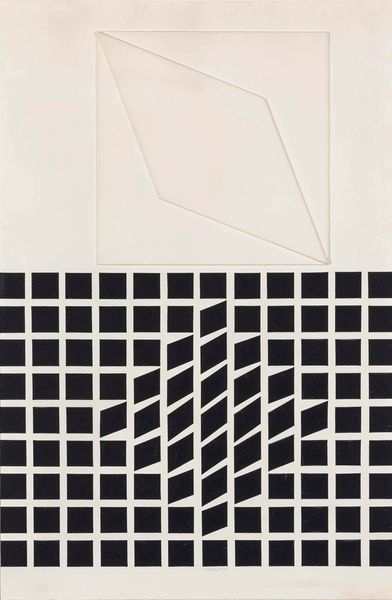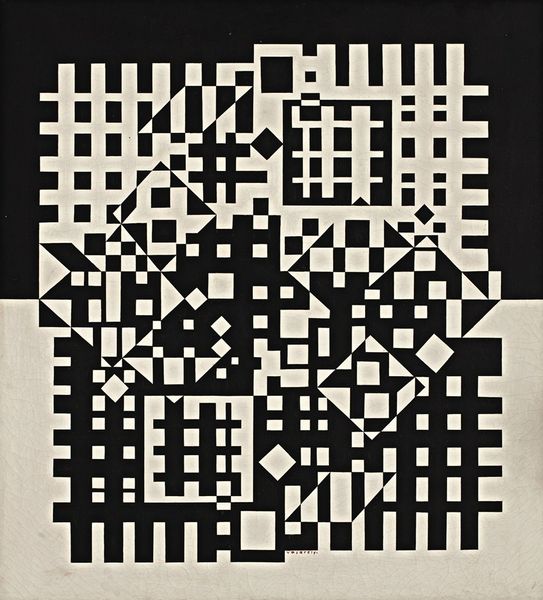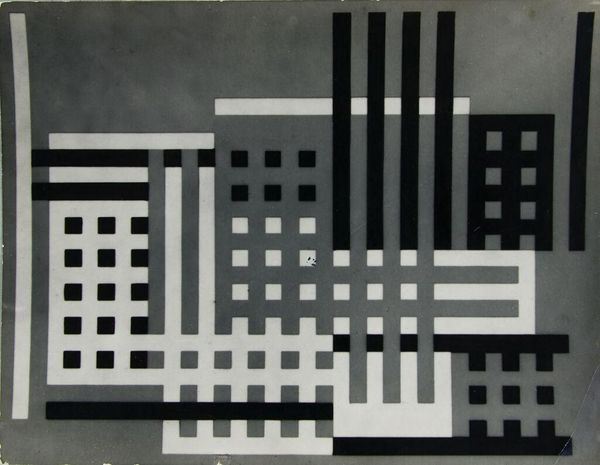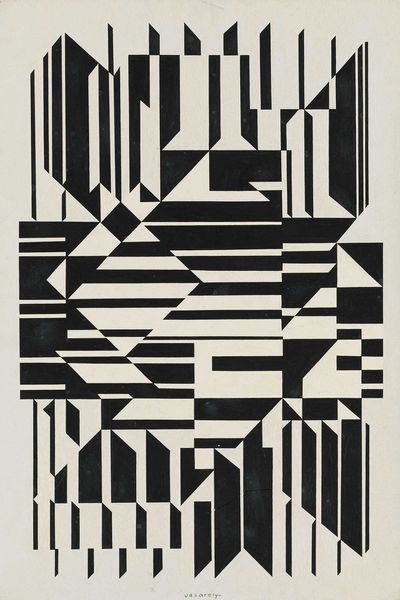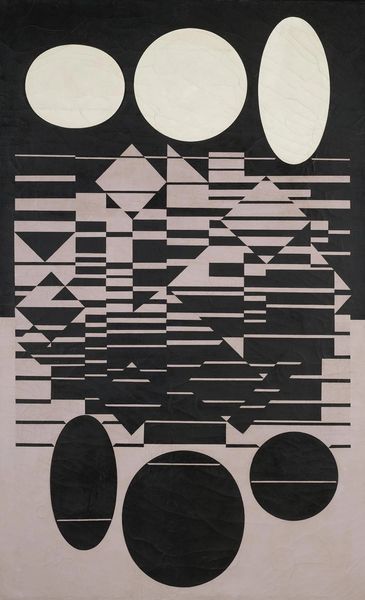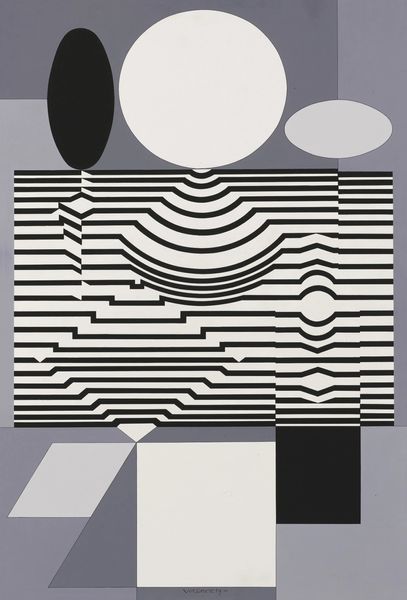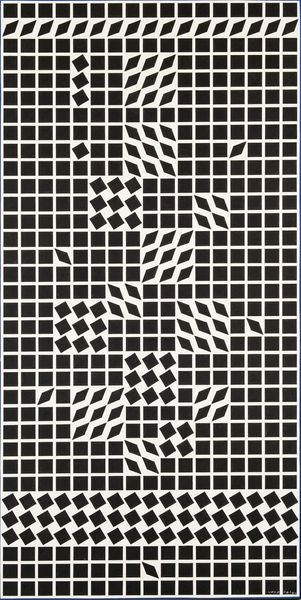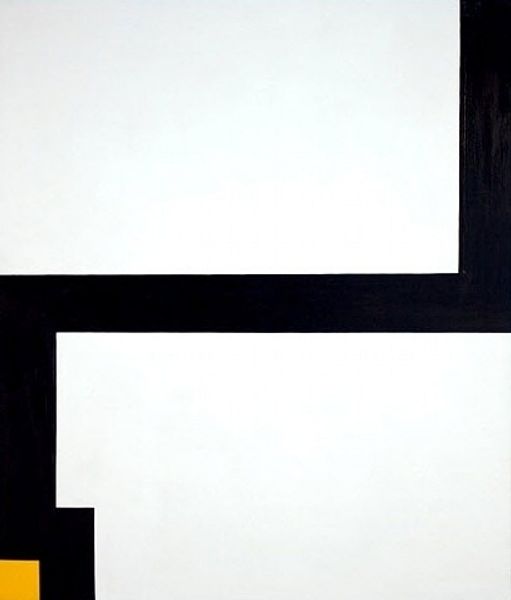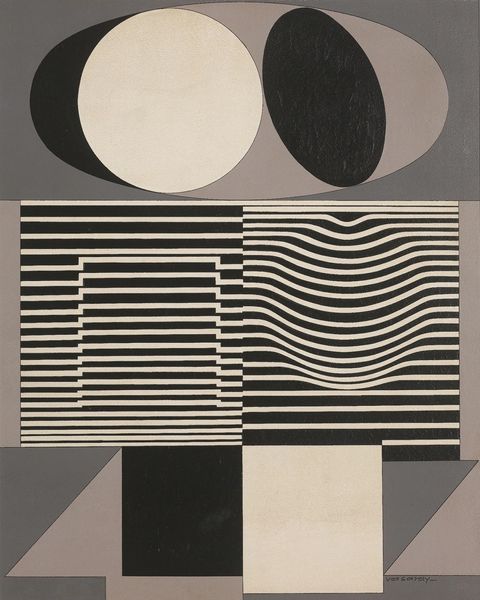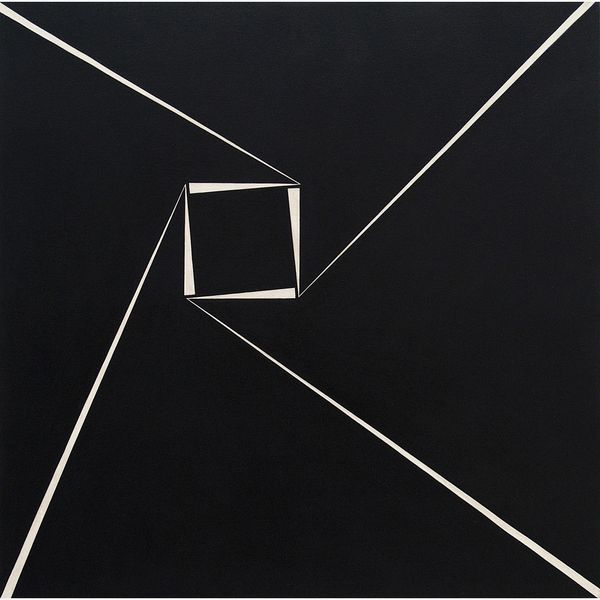
#
random pattern
#
op-art
#
man-made pattern
#
geometric pattern
#
subtle pattern
#
minimal pattern
#
simple pattern
#
repetition of pattern
#
abstraction
#
pattern repetition
#
layered pattern
#
combined pattern
Copyright: Modern Artists: Artvee
Victor Vasarely created "Oeta-NY" using a limited palette of black, white, and gray to construct a world of optical dynamism. Immediately, we are drawn into a stark interplay of geometric forms that seem to hover and shift before our eyes. The composition is anchored by a grid that appears to buckle and warp, challenging our sense of perspective. Vasarely’s manipulation of squares into rhomboids suggests movement and instability. This use of geometric abstraction isn’t just about aesthetics, it engages with broader questions about how we perceive space and the illusionistic potential of art. The floating squares add to the sense of spatial ambiguity, and the relationships among forms undermine any stable reading. The overall effect is less about representing something real and more about creating a visual experience that plays with our perceptions. Through these visual techniques, Vasarely invites us to question the very nature of seeing.
Comments
No comments
Be the first to comment and join the conversation on the ultimate creative platform.

